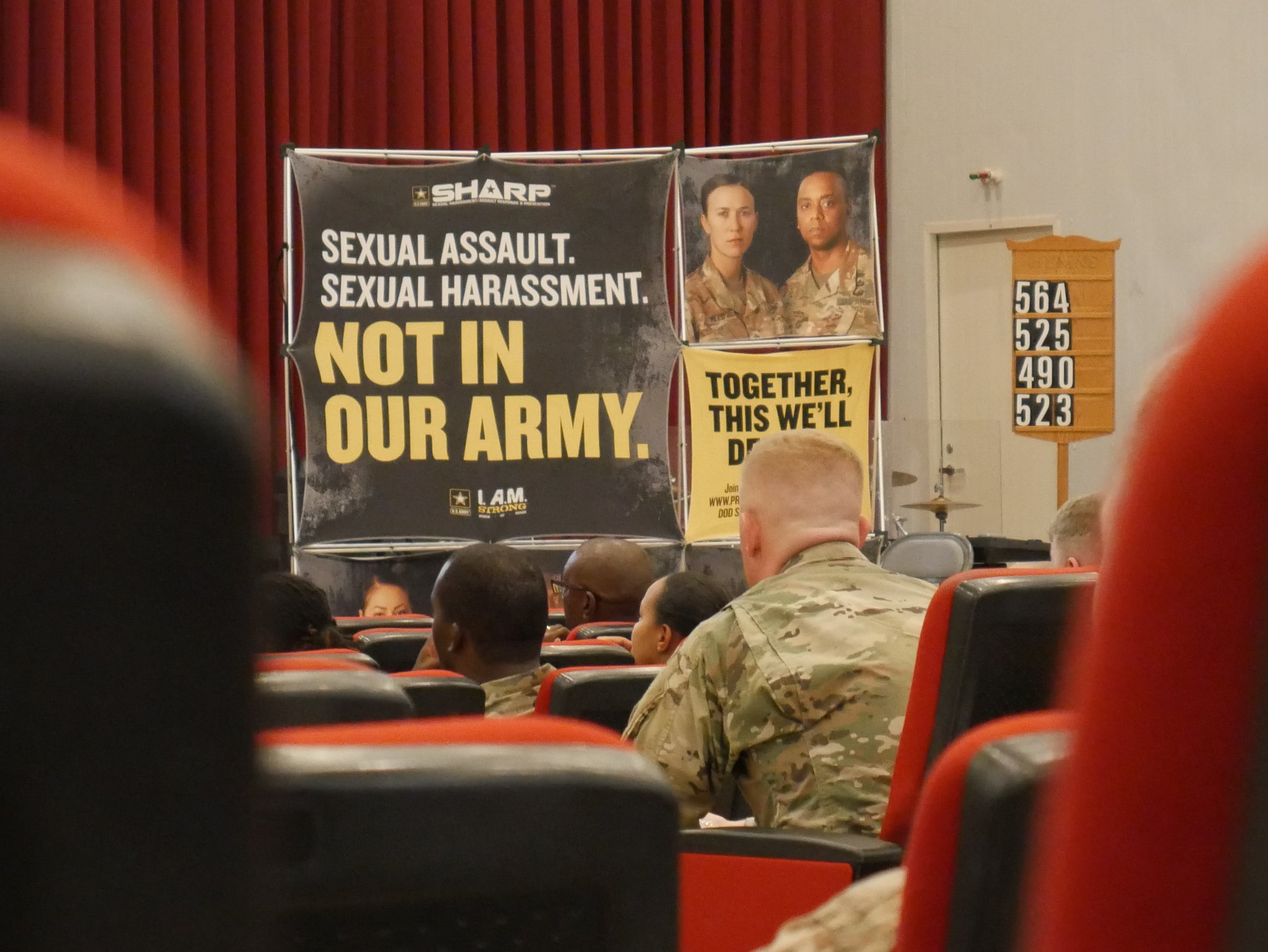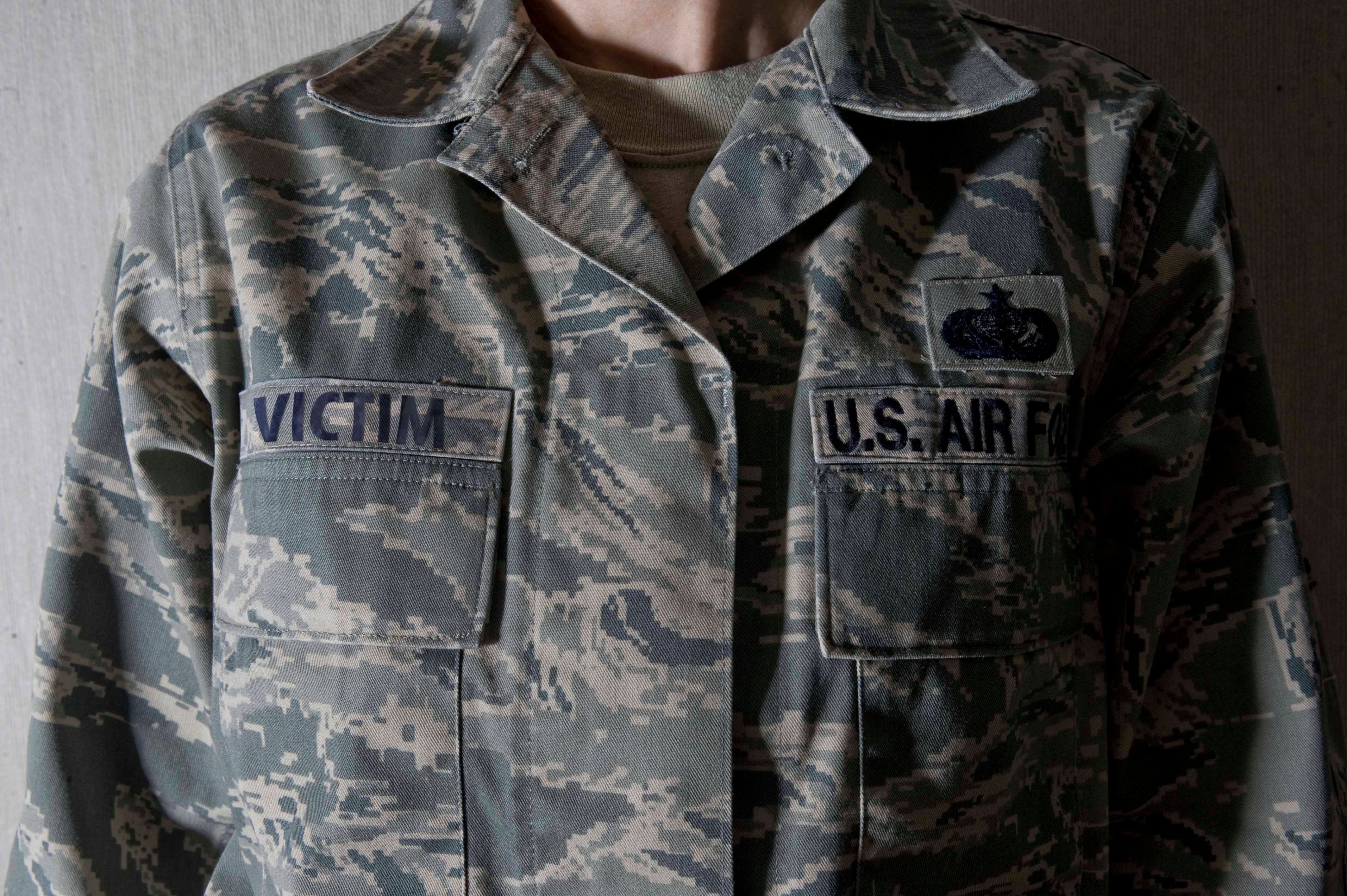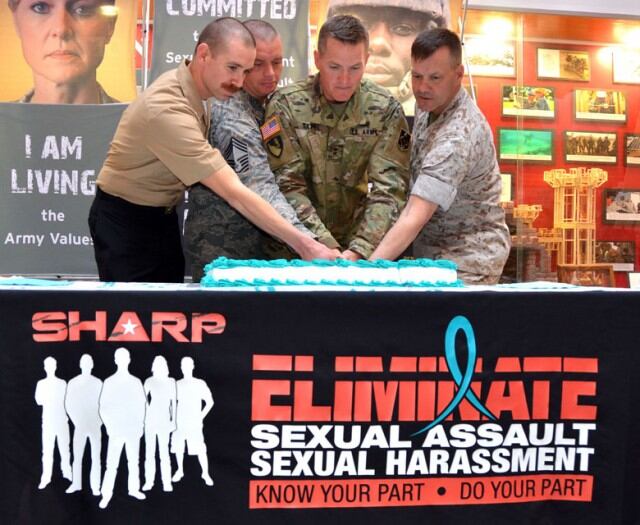After nearly two decades of specific efforts across the military to tackle an entrenched, widespread sexual assault and harassment problem, the services are still having a hard time with the prevention part.
Those are the findings from a series of on-site installation evaluations the Defense Department undertook in 2021. In fact, slides shared with reporters on Thursday show that DoD still considers its sexual assault prevention infrastructure “early in development.”
“So in terms of our progress, over the past several years, we’ve really built our prevention approaches around the evolving public health and prevention science for ... sexual assault, as well as the other areas,” including sexual harassment, suicide and domestic violence, which the evaluations also covered, Andra Tharp, the senior prevention advisor for the office of force resiliency, told reporters. “And that literature has really been growing and giving us more tools, now more than ever.”
DoD launched its Sexual Assault Prevention and Response office back in 2005. In practice, the response side has become much more developed, as the services have focused on encouraging survivors to report their assaults, with the promise that there will be legal, mental health and other resources available for them.
The prevention portion has lagged, a Pentagon spokesman told Military Times on Thursday.
“The secretary’s not comfortable that we haven’t done as good a job on prevention as we should have done, and what he really appreciated about this report was how candid it was about how much more work we have to do,” John Kirby said.
And further, he added, there won’t be any progress on prevention until the guidance at the top becomes part of the culture at the bottom.
“Because you can have the best prevention program at the corporate level here ... but unless it’s being acted on and executed and locally adopted, then it’s no better than the paper it’s written on,” Kirby said.

The evaluations were part of Defense Secretary Lloyd Austin’s February 2021 direction to visit military installations and review compliance with sexual harassment and assault policies, including prevention efforts.
A team visited 20 installations across the military, including five Army posts in Germany and two visits for the National Guard, in Kentucky and Michigan.
“A key objective for us all is to better understand current gaps and provide our teams with the necessary tools to enhance prevention capabilities,” Austin said in a memo signed Wednesday. “As I have said before, preventing sexual assault requires commitment from every echelon of DoD leadership.”
The difference makers, according to the evaluation findings, come down to engaged and informed leadership.
Part of the issue may have been the collateral nature of SAPR staff in units: response coordinators, victim advocates and others often performed that duty in addition to their operational jobs. That will go away with the implementation of recommendations from an independent commission completed last year, which called for full-time sexual assault prevention and response staff.
“The science has evolved over time, to a place that we now have a lot of tools to take more decisive action on pairing the evidence-based programs and policies that are coming out of the civilian literature,” Tharp said of the specialized workforce.
“In addition to the finding that prevention is not well understood at the ground level ... we found that while most leaders genuinely wanted to understand and meet the needs of the service members they were leading, they were not accurately understanding what those needs were. And as a result, [they] were not exhibiting concern and compassion for those needs,” Tharp said.
RELATED

Specifically, the most at-risk groups ― women and junior-enlisted troops ― felt that their commands didn’t understand they needed to be not only safe, but to feel like their leadership cared about their well-being.
The other major theme, according to Tharp, is that many troops felt that “missions were prioritized above and at the expense of people. Whereas in our promising units, leaders communicated and reinforced that people were part of the mission.”
“The way that we saw this play out in some sites was that unhealthy climates marked by unprofessionalism, bullying and harassment were tolerated, and help seeking was either not possible or was perceived to be punished,” she said.
Multiple studies in the past decade have shown that command climate has an enormous bearing on likelihood of assault.
The military departments have until June 3 to bring their sexual harassment policies into compliance, including how they’ll compile data and share it with other organizations. They will be required to submit their plans to Austin.
Going forward, according to the memo, the department will conduct similar studies every other year. The Pentagon’s personnel and readiness team will also do follow-up visits to some installations in Germany.
The departments will issue guidance by Oct. 3 that reflects their improved policies.
Meghann Myers is the Pentagon bureau chief at Military Times. She covers operations, policy, personnel, leadership and other issues affecting service members.





